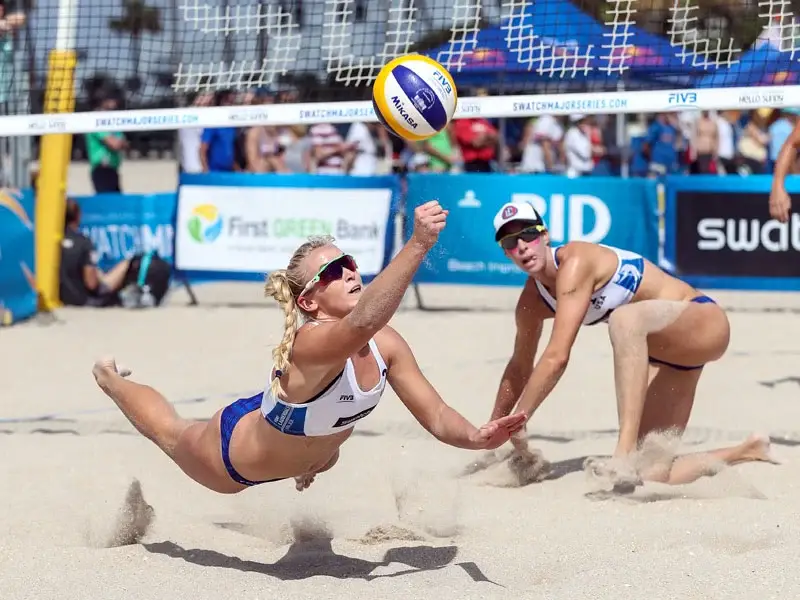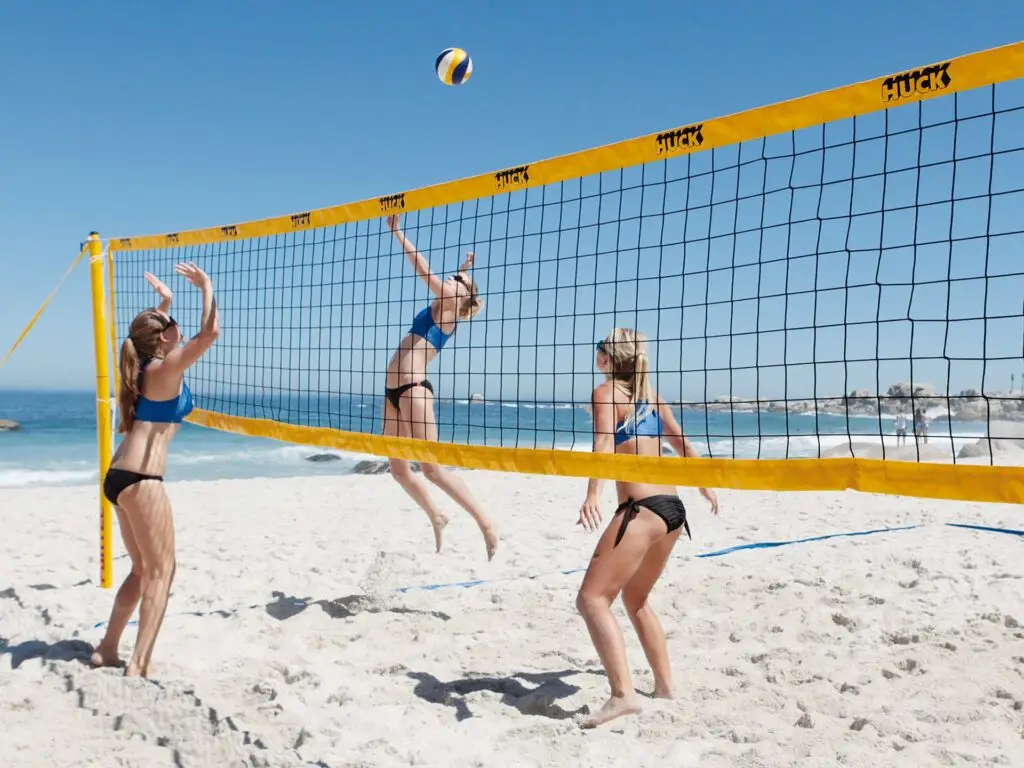Active recreation is no longer limited to jogging in the park or working out at the gym. The modern pace of life demands variety, and sun and sand offer ideal conditions for functional training without boredom or routine. The benefits of beach volleyball are well established – the positive effects are noticeable after just a few games. Contact with nature, the use of all muscles, active communication and the change of emotional background make this sport a universal tool.
Physical improvement: the benefits of beach volleyball
Moving on uneven ground creates unique conditions. The sand requires more strength with every step, which increases the strain on the calf muscles, thighs, buttocks and feet. As a result, the benefits of beach volleyball for the body are evident after just a few games.
Muscles, joints and ligaments
Jumps, lunges, sudden changes of direction and standing work activate all the important muscle groups. The sandy ground cushions impacts, reduces the risk of injury and at the same time forces the stabilising muscles to work. The joints are trained without overload, and the ligaments are strengthened by micro-movements that do not occur on hard surfaces.
Coordination and reaction
Constantly switching between receiving, passing and attacking promotes spatial awareness, balance and reaction speed. Every situation requires an immediate decision – attack, defend, change position. Such conditions are ideal for training neuromuscular connections, which has a direct effect on overall coordination.
Energy and calorie burning: training without boredom
 Beach volleyball combines playful elements with intense cardiovascular exercise. Playing on sand requires the active participation of all muscle groups, rapid movements, repeated jumps, quick movements and lightning-fast reactions. The dynamic transitions between receiving, passing, blocking and attacking leave no room for recovery. This is precisely why beach volleyball surpasses most standard workouts in terms of energy consumption.
Beach volleyball combines playful elements with intense cardiovascular exercise. Playing on sand requires the active participation of all muscle groups, rapid movements, repeated jumps, quick movements and lightning-fast reactions. The dynamic transitions between receiving, passing, blocking and attacking leave no room for recovery. This is precisely why beach volleyball surpasses most standard workouts in terms of energy consumption.
With a game duration of 45 to 60 minutes, the intensity remains at 70 to 85% of the maximum heart rate. During this time, the athlete consumes between 500 and 800 kilocalories, with both fast and slow muscle fibres being used. The main difference to indoor training is the complete absence of monotony: every move brings new challenges, and the pace is constantly changing.

On uneven ground, the body activates the deep stabilisers and compensatory muscles. This creates a ‘double effect’ – with the same technique, the movement requires more effort. The result is increased energy consumption and improved muscle tone without the risk of overload.
Endurance and exertion: acceleration of the body’s rhythm
The special feature of this format is its interval structure. Each play is accompanied by a peak performance followed by a short breather. This pattern puts strain on the heart, lungs and cardiovascular system in a safe but productive way. The benefits of beach volleyball in this regard are evident in improved oxygen exchange and increased respiratory endurance.
Quick starts, repeated jumps and battles at the net promote the development of anaerobic endurance. At the same time, resistance to fatigue is built up as the body has to switch quickly between periods of exertion and recovery.
An average game includes more than 200 active episodes, each of which requires the involvement of all systems: the nervous system, the respiratory system and the muscular system. With systematic training, a reduction in resting heart rate, an increase in lung volume and resistance to pressure fluctuations are observed.
Combustion and regeneration: fat as an energy source
The beach volleyball format activates fat burning after just 15 minutes of play. The body uses its internal resources and maintains a high energy turnover. After the training session is over, the EPOC effect (excess post-exercise oxygen consumption) remains, during which the body continues to actively burn calories.
This process lasts 24 to 36 hours after the end of the game. During this time, the body balances energy consumption, restores glycogen stores and strengthens the metabolism. This property makes beach volleyball an effective tool for those who want to control their body weight or reduce their body fat percentage.

Sand as a surface requires a greater range of motion – the legs work harder and the upper body stabilises more than when training on solid ground. This leads to additional energy consumption for the same movements, which significantly increases the overall fat burning values.
Compared to classic cardio exercises such as running or cycling, beach volleyball uses more muscle groups and provides emotional motivation, allowing you to keep going longer without it becoming monotonous.
Emotions, team spirit and stress relief: the benefits of beach volleyball
The game format requires commitment and communication, making it not only a workout but also providing complete emotional balance. The benefits of beach volleyball go far beyond physical fitness.
Mood and stress relief
Players constantly interact with each other, support each other, discuss tactics and react to every game event. Contact with nature, fresh air and sunshine stimulate the production of serotonin and endorphins. After the first set, tension eases and anger and restlessness give way to enthusiasm and smiles.
Team and communication
The 2-on-2 format requires coordination and trust. Players quickly establish communication, making volleyball a tool for building team chemistry and developing leadership and adaptability skills. Joint actions create a sense of belonging and commitment.
Sun, sand, exercise – the formula for balance
 The modern approach to sport requires both efficiency and enjoyment. The benefits of beach volleyball are evident not only in improved physical fitness, but also in strengthened emotional stability, the promotion of social activities and increased overall vitality.
The modern approach to sport requires both efficiency and enjoyment. The benefits of beach volleyball are evident not only in improved physical fitness, but also in strengthened emotional stability, the promotion of social activities and increased overall vitality.
The format is ideal for the summer season. Comfortable conditions, accessibility, and independence from equipment or halls make beach volleyball a universal solution for training, communication, and emotional relaxation.
 en
en  ru
ru  de
de  ar
ar  es
es  hi
hi  fr
fr  nl
nl  it
it  pt
pt  el
el 



